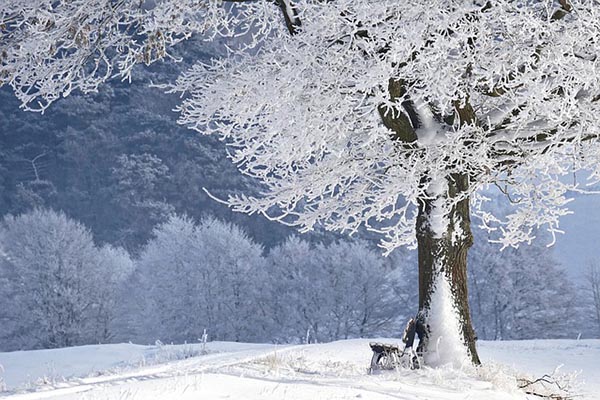Stocking Up: Swine and Dine
 Since everybody’s mind is on Swine Flu, and empty grocery shelves, the question arises what did they do in the old days? From an historical perspective spanning perhaps 10,000 years, or more, mankind throughout the globe has depended upon the swine for food, lighting and food preservation. There exists in some recent times, perhaps 4,000 years, of anti-swine religious protocols, but for the most of the western and far eastern world swine have been a mainstay with people.
Since everybody’s mind is on Swine Flu, and empty grocery shelves, the question arises what did they do in the old days? From an historical perspective spanning perhaps 10,000 years, or more, mankind throughout the globe has depended upon the swine for food, lighting and food preservation. There exists in some recent times, perhaps 4,000 years, of anti-swine religious protocols, but for the most of the western and far eastern world swine have been a mainstay with people.
Looking at more modern times, say for the past thousand years, in order to survive, people had collectively banded together in extended families under one roof-forming villas, or a beehive of industrious workers dedicated to specific trades that centered around the swine. As time passed, fortified home and castles gave way to the middleclass affluent merchants; villas changed to become, around the 1500’s, to smaller individual family homes, albeit: with servants who did the drudge work.
It was not uncommon to have swine in your backyard sties. Germany is famous for its “pig man” who daily went down the rows of houses wherein the pigs let themselves out to join the herd to go forage in the forests for acorns and tubers. That evening the “pig man” with his long whip would return the pigs to the back gates, the pigs letting them selves in to their “homes”, with the owners dumping what swill was left over to their ever hungry tastes.
There was a job for everyone; the peasants who grew the foods, flax, raised sheep, chickens, geese, ducks, and such; the crafters who made necessary barrels; and the dog breeders, as dogs were bred not so much for pets but for killing vermin to protect the property with an emphasis on food stores. Everybody worked; everybody had a skill that centered on survival, for in days of yore while there were flu epidemics, hordes of Mongols sweeping the land to steal your foods, and the ever-present tax man-usually a representative of the Church.
Nothing has changed much until the late 1800’s following Napoleon’s army learning to live on dried peas with the invention of new ways to store food leading to what we do today: vacuum packing. Also in the early 1800’s the “Lard Pig” was developed not only for “larders” but also for candle making. Swine are a very genetic flexible animal. There exists today a few heritage breeders of swine-check the Internet and Farm Bureaus in your area if you are interested in this direction.
In Asia, and in the western world, swine was developed to suit specific economic needs: the solid meat pig, the pig bred for producing mostly lard, small pot belly pigs to save on feeding them, and giant meat pigs for the market, all reflective of a specific need.
Lard was used way back in history in large wood barrels, and large immovable stone crocks, to store meats. Hence the term: Larder. You wanted a piece of meat; you dipped your arm down into the crock, fished around and pulled out a piece of pork for the cook. Eggs, poultry and anything that could be submerged creating an airtight barrier from the bacteria that spoil food was stored in these giant crocks and barrels. Larding was a learned skill and took the biggest pots to melt the lard down for “Larders”. When the swine was killed, every bit was saved besides the melted lard. My grandmother was fond of making “Head Cheese”, rarely seen in butcher shops anymore. When most animals were slaughtered, their blood was saved and mixed with grains and made into porridge. The intestines were the sausage casings. This may sound disgusting but these were harder times and nutrition was the forerunner of health. No one worried about cholesterol. Fat was in- fat people and fat pigs.
What all this leads up to is food storage and using the old fashion ceramic crock. I believe that the old crocks, if there are no hairline cracks and you can get a good flat seal on the top, are still the best-yet they are very heavy and subject to breakage. Last year I recall searching the web where I found several crock sources, this year there are few if any. The reasoning is that there is no market (consumers) to keep the craftsman working.
Another reason the ceramic crocks are disappearing is the cost of shipping since they are so heavy. You and I can manage a 5-gallon crock, but as they go up in size, you need a forklift to move one.
Then of course is the concept of home construction. My Grandfathers house built in the 1700’s was a big roomy farmhouse that had a pantry and a larder. Today in the electrical modern kitchen refrigeration has overtaken crocks. If you were to strip out the modern kitchen you would still not have enough room for old time ways, food processing and baking. Keep this in mind if you are going to build a retreat in the country.
For those who contemplate a return to yore you might consider constructing a summer canning kitchen, and food processing separate building. This entails a slaughtering pole, butcher blocks, salting bins, with a root cellar and basement- cellar canned goods storage.
Also include the goose man who handles the poultry, the shepherd, the barrel maker called a “cooper”; the endless list of workers you have to feed on your villa.
The more people, the more food consumed, more labor, more storage and so on. We live very well today with a big grocery store convenience.
Some souls still want to put up food and slide a crock in the closet. Pickles, Sauerkraut- Kim Chee, maybe head cheese…but if you cannot find a crock there are modern variances you might consider.
Major commercial food processing uses large heavy duty but light weight food grade plastic “crocks”. I use them for ales, wines, dry stores of grains and such, which we discussed in our first stocking up articles with the use of CO2 preservation, and gamma seals to keep insects out. Go back through the archives.
Also on the storage container list is Stainless Steel. Expensive but lasts forever. Try www.GeneralContainer.com as a start on the web.
A local 93-year-old lady up the road advised us NOT to use salt in the canning jars. You might want to drink the liquid as a water substitute-besides it would be full of vitamins anyway. The salt is not necessary in modern canning process anyway. Such practical experience I always look forward to using.
The greatest boon to cooking evolved from the British in the early 1500s when they made the first cast iron kettle. This was a crock in a sense for food storage as once hung in the fireplace (Stoves as we know them did not evolve till the late 1700’s.) for cooking you kept the pot cooking forever. This “pot-au-feu” revolutionized food nutrition as you could always dip in and get a snack-necessary in cold brutal work of British winters. The food in the pot NEVER spoils as long as it is kept very hot, and the flavor always changed as new stock was added as the hunters and gathers were bringing in foods.
Go to www.AgriSupply.com for a large supply of farm related BIG cast-iron cooking pots still used for swine dipping, molasses making and such for big, really big, by modern family standards “crock” needs. They also have some nice large Stainless steel cooking pots that may serve your interests.
Perhaps you are like me with visions of hams, pork butts, smoked bacon, pickled pigs feet, and home made sausages- all from our family pigs. Pigs are easy to raise, and not expensive except in planning and initial set up. If you have the space to grow a field of corn and meadow to graze a couple of pigs you are in “Hog Heaven.”
Our space does not permit as much as we would like to say about this wonderful animal that has saved people from starvation on numerous occasions, but I would recommend two books for your consideration.
At the local Tractor Supply, and other farm stores-book stores, or ordering on line there is an informative thick magazine publication: “Pigs.” This is from the editors of Hobby Farm© magazine, phone 1-800-738-2665 for more information. This is, as with all their publications- delightful.
Now that you are a bit more serious, the best small book I have found that talks about pig raising is written by a pig farmer in a no nonsense way. Go to Garden Way Publications and look up “Small-Scale Pig Raising”’ by Dirk van Loon.
As a SIDE NOTE I am besieged with requests for articles on chickens. This will be a long lengthy series article that I am putting together for this fall when it will be a good time to put up the new chicken house and prepare for baby chicks in May 2010. There is a lot more to know about chickens than the egg.
God Bless.
COPYRIGHT: 2009, Back2theLand.com, Mark Steel



